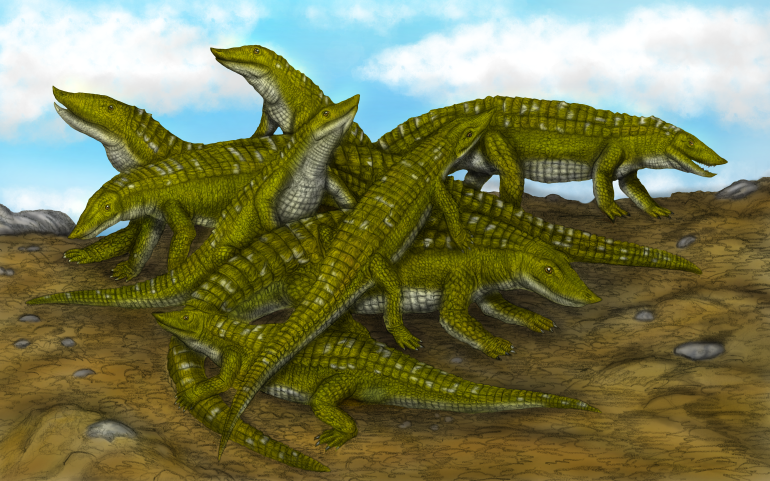Palaeontological mystery solved

A palaeontological mystery solved after almost 150 years thanks to a researcher of the Institute of Biology at the University of Opole!
Elżbieta M. Teschner, MSc, from the Institute of Biology at the UO, together with scientists from Germany and Argentina, examined humeri from an unusual accumulation of 24 specimens of Aetosaurus ferratus in a quarry in Kaltental near Stuttgart in southern Germany, which was discovered by Oscar Fraas in 1877.
Aetosauria is an extinct clade of armoured archosaurs. They were somewhat similar to modern crocodiles in this respect, albeit they were a group that moved exclusively on land. Its representatives reached a total body length up to six metres and were widespread on almost every continent during the Triassic period.
The body lengths of the animals from the studied accumulation ranged from just 20 to 82 centimetres. Scientists wondered whether they were juvenile specimens, and therefore small, or adult but small-sized species.
Paleohistology, the science of growth at the tissue level, makes it possible to determine the age of individuals. Long bones are the best model for calculating the age of animals, as they have growth marks that can be counted during their lifetime - similar to growth rings in tree trunks.
On this basis, it was possible to determine the relative age of the specimens studied, which suggests that the gathered animals were less than one year old, i.e. they were juvenile specimens. A mystery from almost 150 years ago has thus been solved!
Interestingly, the bone accumulation most likely represents a gregarious behaviour that was observed in A.ferratus for the first time. Presumably, it was intended to increase the chances of survival and to deter potential predators. The findings were published in Journal of Vertebrate Paleontology.

